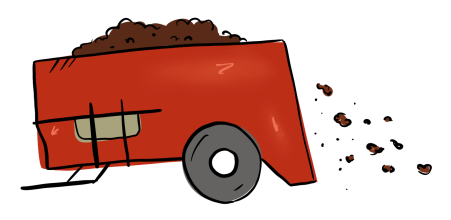
The Highlights:
-
Reduce fertilizer, lime, gypsum and watering needs
-
Tailor compost application to existing soil conditions for the best results
Compost can be used for turf in a variety of ways, including during the installation process. In order to use compost in this type of application, one must incorporate the mixture within the root zone of the soil to improve the soil quality and enhance plant growth. This process can apply to all turf installation methods.
The benefits of the compost can be seen in both appearance and monetary savings. Nutrient-dense compost allows for healthy growth, improving the appearance of the designated land. Additionally, compost application reduces the need for fertilizer, allowing for 50% to 100% worth of savings on need for supplemental nutrients during the first one to two years. The compost increases water retention within the soil, allowing for a 25% to 50% increase in savings annually, while the mixture may also reduce lime or gypsum application, improve stormwater capture, and significantly reduce soil-borne disease.
For the purpose of turf installation, the compost should be evenly applied to the designated area at around 1 to 2 inches in depth. If desired turf species is salt-sensitive, application of compost may be reduced. In situations where the original soil is sandy or where reduced water usage is desired, an increased level of compost should be applied, although in this case, the nutrient density of the compost should be lower. Compost application should be avoided when soil is excessively wet or dry. Soil should be raked smooth prior to seeding, sprigging, sodding, or hydroseeding, and the soil should be free of large clods, roots, stones larger than 2 inches, and any other material that could interfere with planting and maintenance. Newly seeded and sprigged turf areas may be topped with a layer of fine compost to protect against hot weather or drying winds, and can be used as a substitute for straw and burlap covers. After seeding, the mixture should be watered thoroughly.
Some of the information in this article came from the Compost Research & Education Foundations’ Compost Use Applications - A Return on Investment (ROI) factsheets. The full set of factsheets can be found here.

